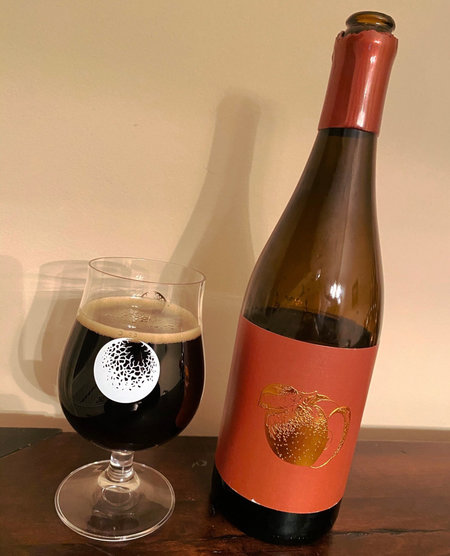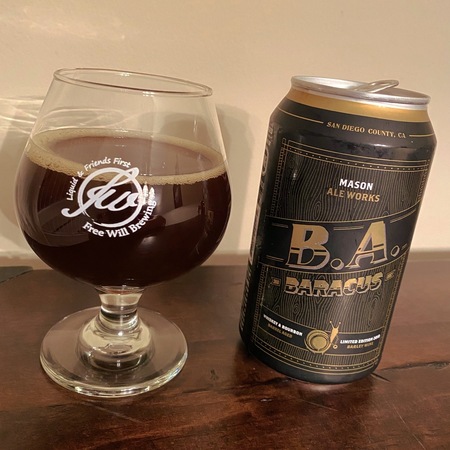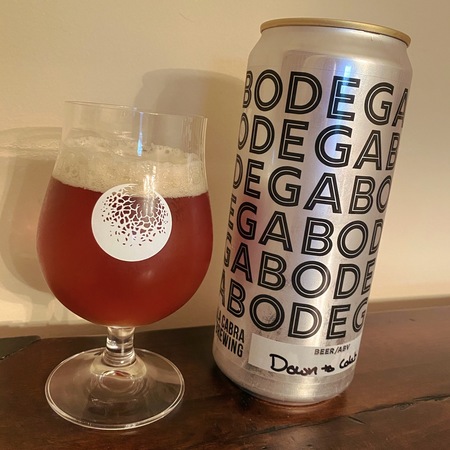The one and only time I’ve been to Cincinnati was during a layover at their airport, whereupon I learned that it’s the city “where pigs fly.” It’s a reference to the infamous pork-packing industry that was so prevalent in the town that it gained the nickname “Porkopolis.”

Now that we’ve got that out of the way, it’s worth noting that Cincinnati was also a well known beer town. Naturally, that did not survive prohibition, but the recent craft beer boom has swelled the ranks of breweries to pre-prohibition numbers and beyond.
I took a flyer on a few bottles of Fifty West’s barrel aged barleywine 10 & 2, but came away with more questions. Just who is this Remus and why does he seek revenge? My chain smoking monkey research squad was unable to unearth any answers, so we went direct to the source to get the skinny:
Our Remus’ Revenge series is all based around George Remus, the “King of Bootleggers”. Remus made an empire running alcohol on Route 50, which goes from Ocean City, Maryland to Sacramento, California (and the road our brewery is located here in Cincy)! George Remus was allegedly the inspiration for Gatsby in F. Scott Fitzgerald’s book, hosting lavish parties in his mansion “Marble Palace”, which is another one of our BBA beers in the series. He famously murdered his wife here in Cincinnati in a very popular park after she left Remus and filed for divorce, leading to our “Ghost of Imogene” BBA Imperial Stout. Our “Death Valley Shootout” BBA Stout tells the story of a fire fight that took place at Remus’ Death Valley Farm, one of his fortified distilleries. We just released “Six Feet Under” BBA English Barleywine referencing his death and burial in Bourbon country right across the river from Cincinnati in Kentucky. 10&2 is our award winning (gold from WBC and silver from GABF) BBA American Barleywine that kick-started our barrel aged beer series but actually doesn’t have any Remus lore tied in with it!
Many thanks to Fifty West’s no doubt beleaguered social media manager for responding to my no-doubt annoying inquires. Anyway, so now there’s three more beers in their barrel aged series that I’ll need to track down. In the meantime, I’ll have to make do with this more American take on the barleywine style, aged in bourbon barrels.

Fifty West Remus’ Revenge Series 10 & 2 Barleywine Aged In Bourbon Barrels – Pours a murky brown color with half a finger of off white head that quickly resolves to a ring around the edge of the glass. Smells nice, lots of toffee, caramel, bourbon, and oak, some of that faded hop quality that indicates the American Barleywine base… Taste hits a lot of those notes from the nose, that dank, faded hop character coming to the fore quickly but yielding to the caramel, toffee and barrel character before reasserting some bitterness in the finish along with a heaping helping of booze. Mouthfeel is full bodied, rich, and well carbed with a boozy bite and a bit of heat too. Overall, this is some tasty stuff and the barrel aging clearly took some of the bite off the highly hopped base, making for a damn solid BA Barleywine. B+
Beer Nerd Details: 12.5% ABV bottled (12 ounce waxed cap). Drank out of a snifter on 4/26/20. Vintage: 2019.
Certainly seems like a brewery that would be nice to visit if we weren’t all holed up in our homes during a pandemic in an election year. The same year in which some geniuses discovered these mystery death seeds from China and thought Hey, let’s plant these suckers; what’s the worst that could happen? Sorry, what was I talking about? Oh, right, beer.












